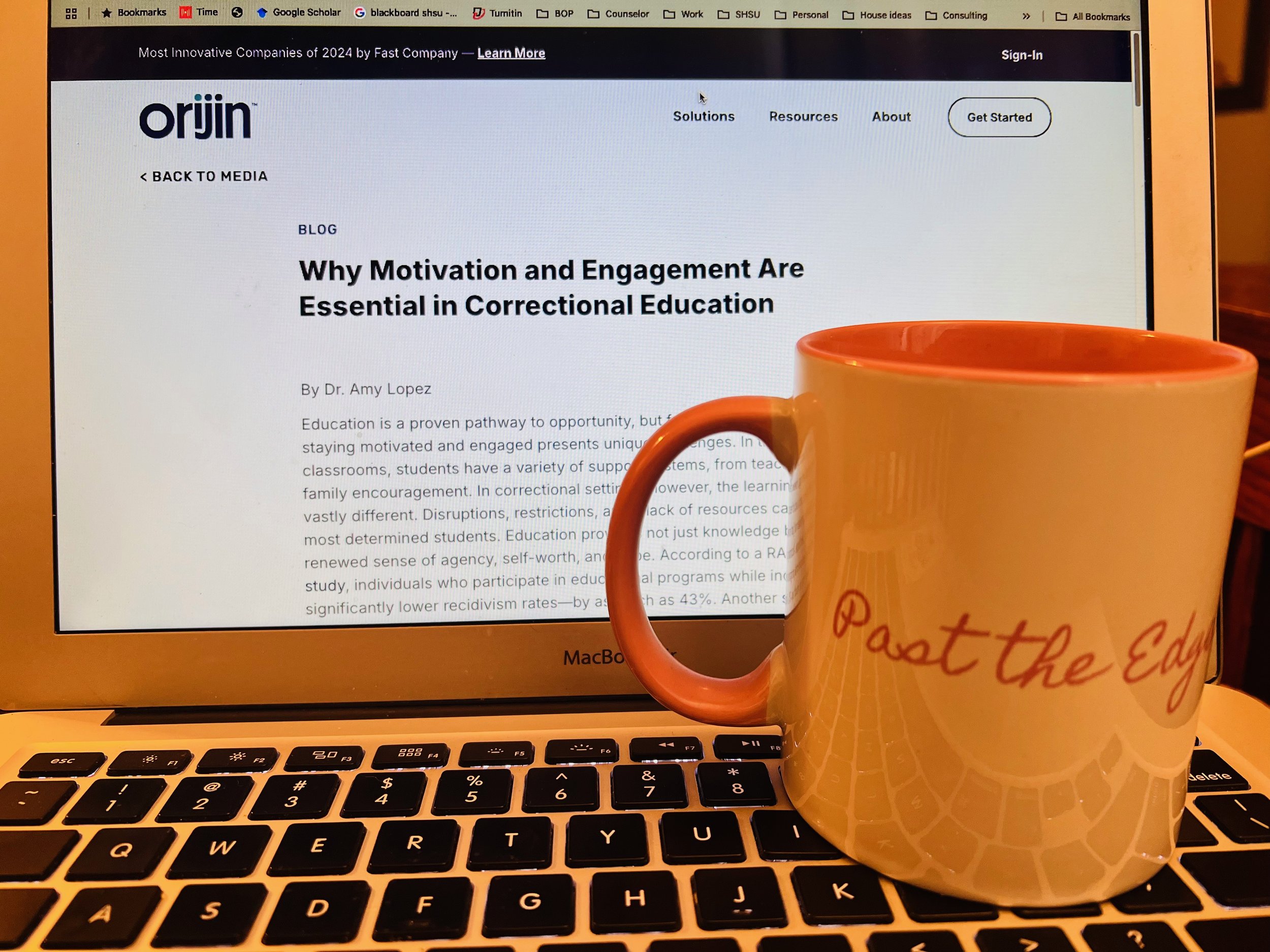
☕ Sunday Morning Coffee: Passion Projects & Prison Classrooms
Nurturing passion is one of the most important gifts we can give a young person. And that’s true whether they're in a suburban high school, a GED program in jail, or a reentry support group in a halfway house.

Why Motivation and Engagement Are Essential in Correctional Education
Education is a proven pathway to opportunity, but for justice-impacted learners, staying motivated and engaged presents unique challenges. Technology can open the door to motivation, inspiration, and aspiration for these learners!

The Importance of a Work Community
Community isn’t just a noun—it’s something you do.

Supporting Student Wellbeing
Every educator—whether in a traditional classroom or behind the walls of a correctional facility or at their dining room table—knows that student wellbeing is the foundation for meaningful learning.

Prison Labor: Exploitation or Opportunity?
Every so often, the topic of prison labor comes up in the national conversation, and it’s usually framed as one of two extremes: either a modern form of slavery or a valuable rehabilitative tool. Like most things in life (and in corrections), the reality is more complex. So, grab your coffee, and let’s take a balanced look at the pros and cons of incarcerated labor.

The Ripple Effect of Wellbeing
When we nurture wellbeing in ourselves, it extends outward—to our colleagues, our students, and our communities.

From the Classroom to the Cellblock: How Educators Can Collaborate with Correctional Systems
By sharing strategies, collaborating across systems, and advocating for policies that prioritize education over incarceration, educators can help reduce recidivism and create pathways for success.

How Teacher Perceptions Shape Student Outcomes
For students, particularly those from marginalized communities, the impact of these biases can be life-altering, affecting everything from disciplinary actions to academic success.

The Stories We Tell: How Society Shapes History to Serve Its Ideology
More often than not, the way we remember and teach history serves a very particular ideology, one that upholds systems of power and oppression.

Students with Disabilities: A Hidden Population in the School-to-Prison Pipeline
The school-to-prison pipeline disproportionately impacts students with disabilities, yet their experiences are often overlooked in discussions about educational inequities and justice reform.

Dyslexia Behind Bars
Sunday Morning Coffee: Did you know that nearly half of the incarcerated population may be living with dyslexia?

Compliance vs Engagement
Teachers are always balancing the need for student compliance while striving for engagement.

The Transformative Power of Writing: A Lifelong Skill for All Students, Especially the Incarcerated
Writing has multiple benefits for all students, particularly for incarcerated ones.

The One-Room Schoolhouse in Prison Classrooms
The one-room-schoolhouse concept is alive and well in prison classrooms, and correctional educators can enhance student learning by differentiating instruction.

The Power of Displaying Student Work

Culturally Responsive Instruction
embracing cultural diversity and practicing culturally responsive pedagogy can transform our classrooms (even if they're inside four walls).

The Science Behind Setting Up Your Classroom
There’s a science behind setting up an engaging learning environment.

We could all use a 12 step program…
We could all use a 12 step progam to tackle life’s challenges.

CBT for Youth
At its core, CBT operates on the belief that our thoughts influence our emotions, which in turn affect our behaviors. When teens harbor distorted and negative thoughts, they are likely to experience difficult emotions and engage in destructive actions. Conversely, positive thinking leads to positive emotions and behaviors. CBT aims to help teens shift their thoughts, feelings, and behaviors towards a more positive trajectory.

Motivating Adult Learners
Understanding the theory of andragoy can help instructors motivate adult learners, and motivate learners to help themselves.